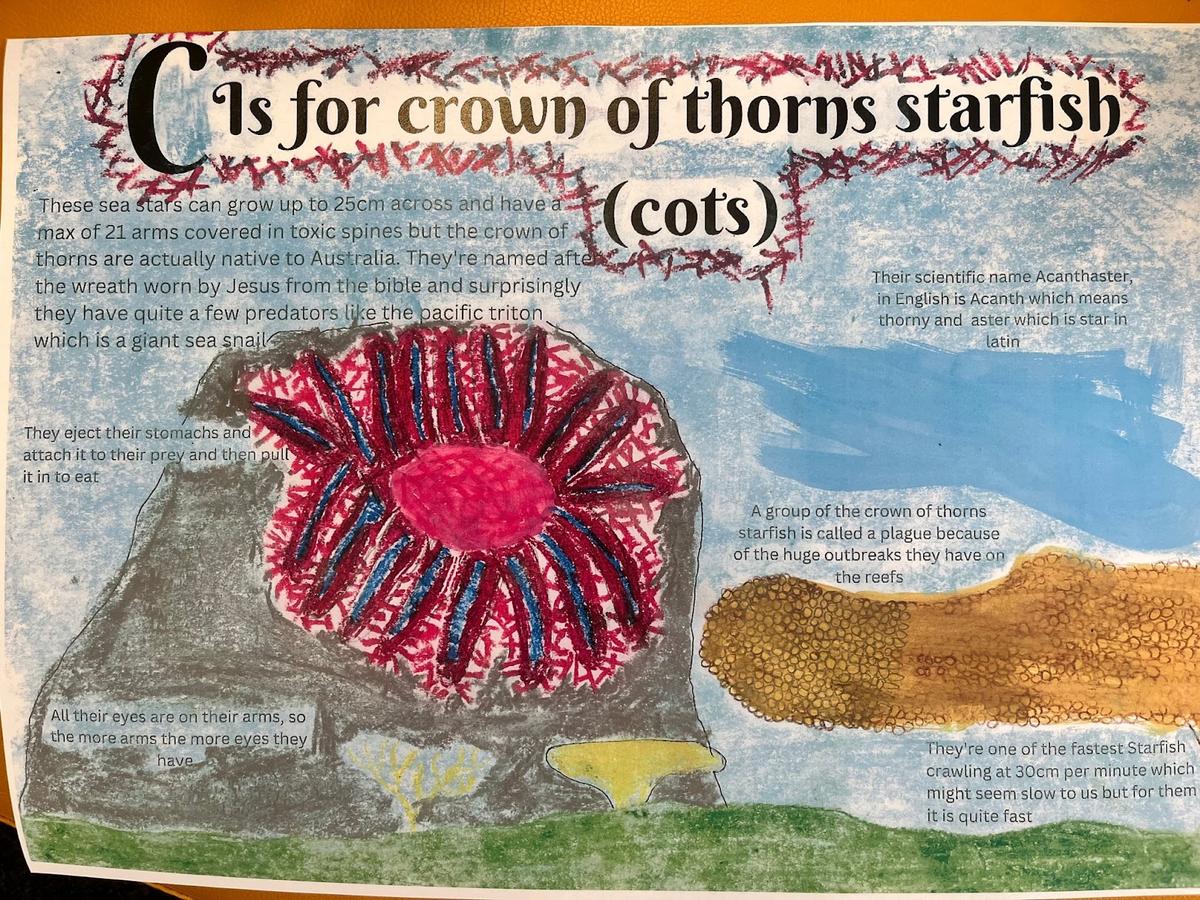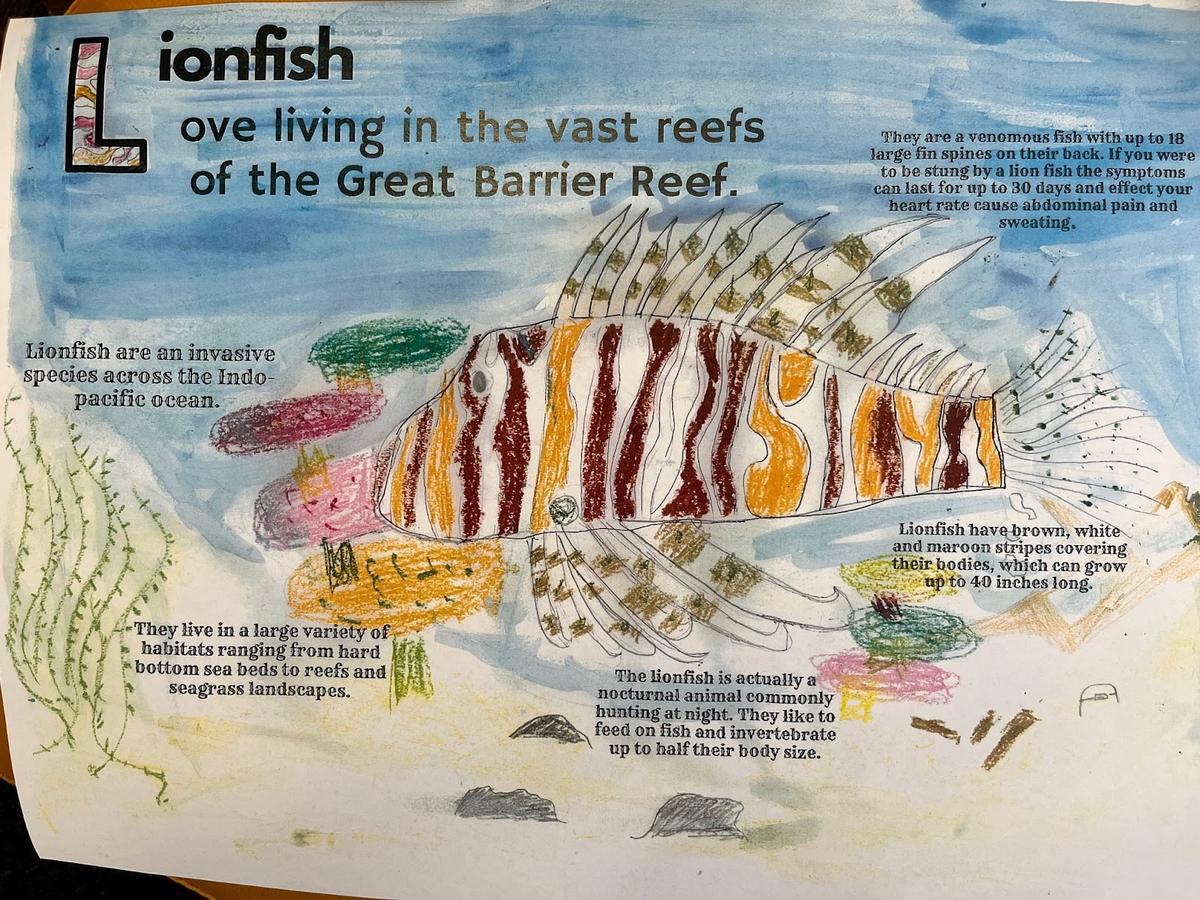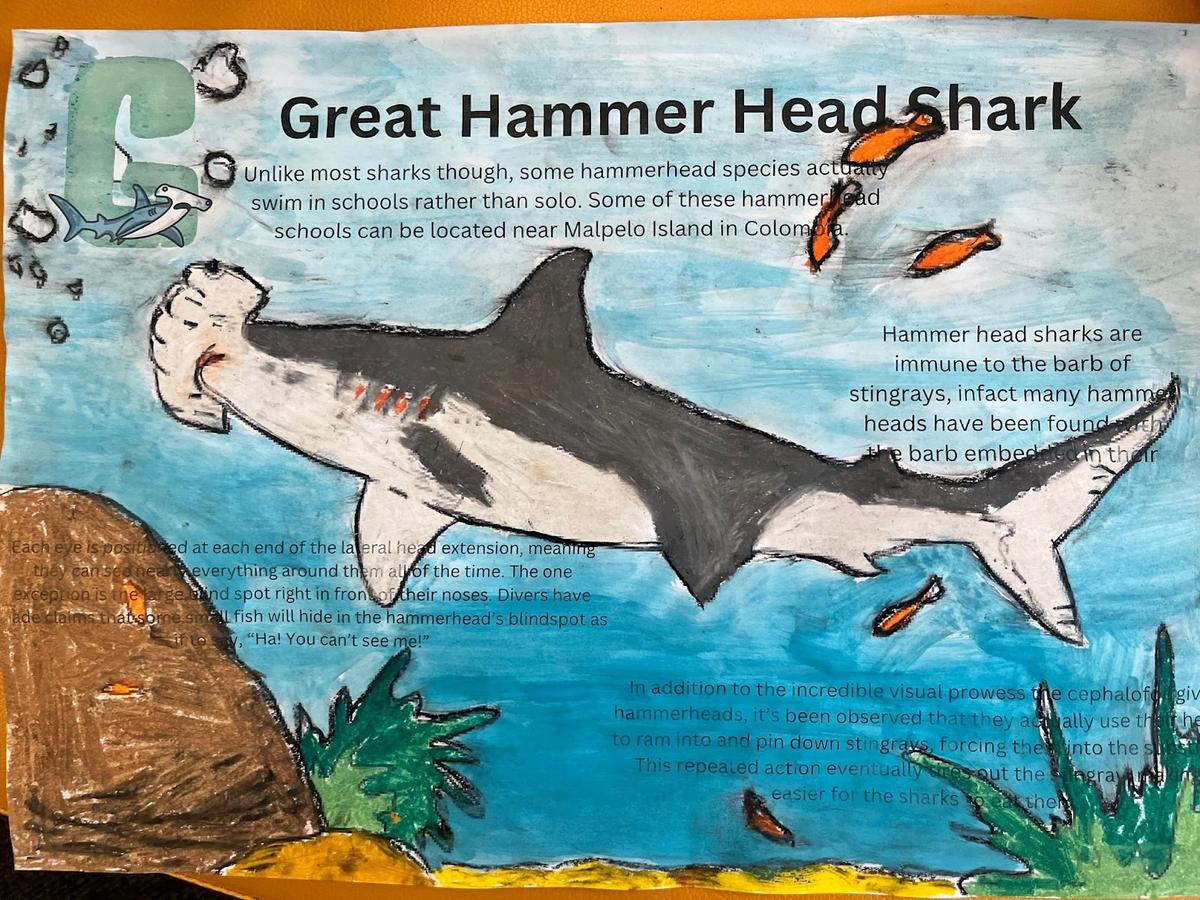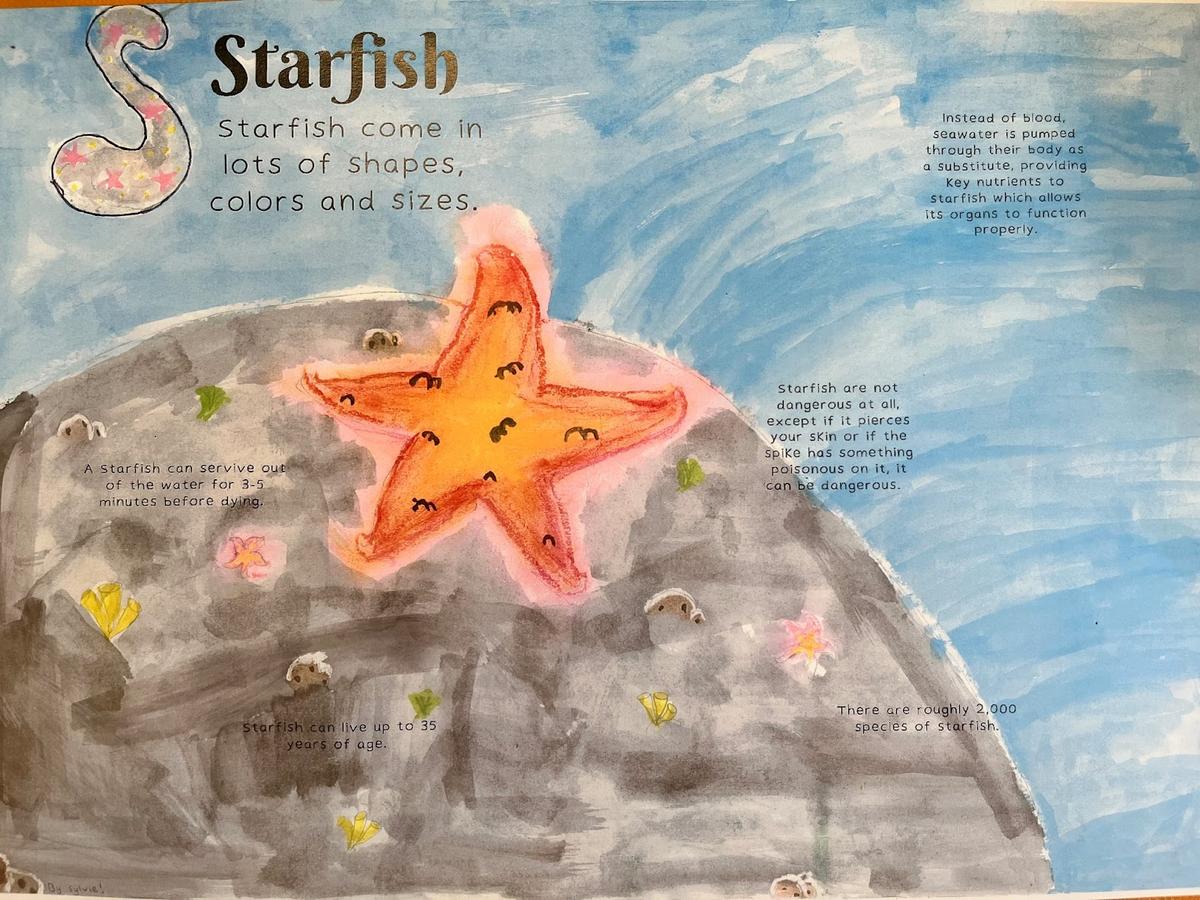Year 5/6 Bulletin

Creating Texts
Curriculum Links
- Word Choice
- Text Structure and Organisation
- Creating Literature
Learning Intention: To consider word choice, text structure and organisation, and presentation when creating an information text.
Learning experience overview:
This writing experience ran over 3 sessions, each with its own writing focus.
Guided lesson - Mentor Text
Students were shown the text “A is for Australia” and were prompted with questions such as “What are some different reefs in Australia? Where are they located? What types of marine life do you think can be found in a reef? Why are reefs important or significant?” Students wrote down under the heading I used to think… everything they knew about reefs. After reading the text and watching videos about the Great Barrier Reef, students wrote down under another column I now know… all of their new found information and knowledge.
Research: Student's chose a sea creature from a selection, based on one they were interested in learning more about. Using computers and information texts, students then researched 5 facts about their chosen animal to use in their own information text.
Creating a text: Students were then asked to create a A3 page, displaying their research about their chosen sea creature. The focus was on how students organised their text on their page, how they were able to conduct relevant and specific research and finally how students were able to use various artistic techniques, similar to those modelling in the mentor text.
Example of student work:
What you can do now (to continue the learning at home from this experience)
- Create a writing-friendly environment: Designate a comfortable and quiet space where your child can write without distractions. Make sure there are writing materials readily available, such as notebooks, pens and pencils.
- Be a writing role model: Demonstrate the importance of writing by engaging in writing activities yourself. Whether it's writing a grocery list, journaling, or writing emails, let your child see that writing is an essential part of everyday life.
- Read together: Reading and writing skills often go hand in hand. Read books, stories, and poems together, and discuss the language used by the author. Take Home Books and Library books come home weekly, this is a great opportunity for this.
- Keep a writing journal: Encourage your child to maintain a personal writing journal to document their thoughts, feelings, and experiences. This can be a private space where they can freely express themselves.
- Use technology to enhance writing: Embrace technology by allowing your child to use word processing software, writing apps, or even starting a blog to share their writing with a broader audience.
- Connect writing to real-world purposes: Encourage your child to write letters to relatives, thank-you notes, or emails to friends. Show them that writing serves practical purposes and can connect them to others.
Remember that the goal is to make writing an enjoyable and rewarding experience for your child. By providing a supportive and nurturing environment, you can help cultivate their writing skills and foster a lifelong love of writing.
Jenny, Zaim and Jade
Year 5/6 Team
Jenny.Kourkouvelis@education.vic.gov.au




